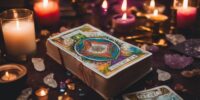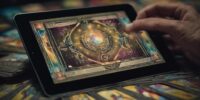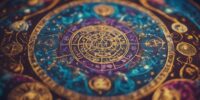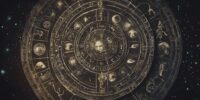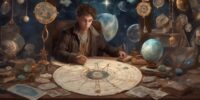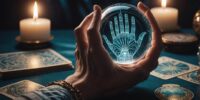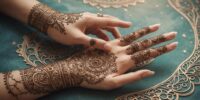Why Tarot Has Been Feared and Fascinated Through History
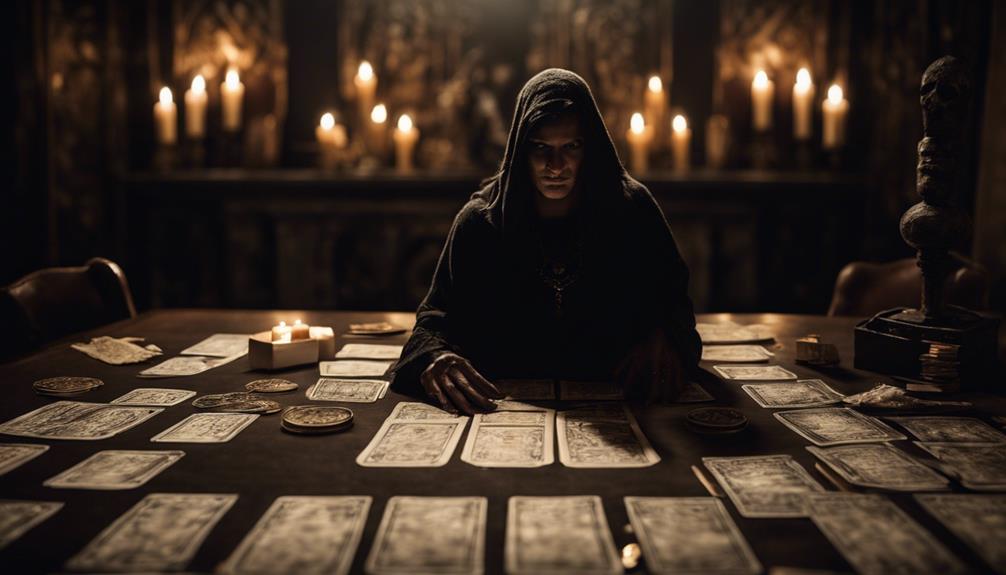
Tarot, a deck of cards often associated with mysticism and fortune-telling, has a long and intriguing history. Its origins can be traced back to the 15th century in Europe, where it was initially used for playing card games. However, the deck soon took on a deeper meaning as it became linked to occult practices and divination.
One of the reasons for the fear and fascination surrounding tarot is its mysterious imagery and symbolism. The cards are rich with archetypal figures, mystical symbols, and allegorical scenes that can be interpreted in various ways. This ambiguity has contributed to the enduring allure of tarot, as people seek to uncover hidden truths and insights about themselves and the world around them.
Over the centuries, tarot has been both celebrated and condemned. It has been embraced by mystics, artists, and spiritual seekers who view it as a tool for introspection and self-discovery. At the same time, tarot has been criticized by skeptics and religious authorities who see it as a form of superstition or even witchcraft.
Despite the controversies that surround it, tarot continues to captivate people's imaginations and spark curiosity about the unknown. Its enduring popularity suggests that, for many, the allure of tarot lies in its ability to tap into the depths of the human psyche and offer a glimpse into the mysteries of the universe.
Origins of Tarot Cards
The origins of Tarot cards can be traced back to medieval Europe, where they were used for both divination and entertainment purposes. Initially, Tarot cards were simple playing cards, but over time, they evolved to incorporate rich symbolism and cultural significance. The intricate Tarot card designs we see today have a deep history rooted in the evolution of art and mysticism.
Tarot symbolism plays a vital role in the interpretation of these cards. Each card holds a unique meaning, representing various aspects of life, spirituality, and human experience. The cultural significance of Tarot cards has transcended time, with people from different backgrounds finding solace and guidance in the messages they convey.
The evolution of Tarot card design mirrors the changing beliefs and values of society. From their humble beginnings as a recreational pastime to becoming a tool for introspection and divination, Tarot cards have captivated the human imagination for centuries. As we explore deeper into the history of Tarot, we uncover a tapestry of wisdom and insight waiting to be explored.
Influence on Medieval Society
The influence of Tarot on medieval society was profound, intertwining with the prevailing beliefs of the time.
In the Middle Ages, Tarot cards weren't just seen as a form of entertainment but as a means to seek divine guidance.
The mystical allure of the Tarot captivated both the common folk and the nobility, shaping their perspectives on fate, spirituality, and the unknown.
Medieval Beliefs and Tarot
During the medieval period, Tarot cards held a significant influence on the beliefs and societal norms of the time, shaping perceptions and guiding decisions in ways that continue to intrigue historians and scholars today.
These cards were laden with superstitions and symbolism, believed to offer spiritual interpretations and insights into the unknown. In medieval society, the Tarot wasn't just a game but a tool used by individuals seeking guidance or looking for deeper meaning in their lives.
The intricate imagery and mysterious nature of the cards captivated the minds of many, leading to a rich tapestry of beliefs and practices surrounding their use.
The Tarot's presence in medieval culture highlights the enduring fascination with the mystical and the unknown.
Tarot as Divine Guidance
In the domain of medieval society, Tarot cards served as conduits for divine guidance, shaping beliefs and influencing decisions with their mystical allure and spiritual significance.
Seeking spiritual insight and personal growth, individuals turned to Tarot for intuitive guidance and self-reflection, believing in the cards' ability to offer profound wisdom and clarity in times of uncertainty.
The intricate symbolism woven into each card provided a mirror for introspection, prompting seekers to delve deep into their own psyche and emotions.
As Tarot spread throughout medieval society, it became a trusted companion for those setting out on a journey of self-discovery and seeking guidance from the divine forces believed to be at play in the universe.
Connection to Witchcraft and Occult

Throughout history, tarot cards have been intricately intertwined with the practices of witchcraft and the occult, encompassing a mystical allure that continues to captivate curious minds. The connection between tarot and these mystical practices has often led to misunderstandings and stigmas associated with witchcraft and occult symbolism. Let's explore some key aspects of this intriguing relationship:
| Witchcraft Stigmas | Occult Symbolism | Tarot Cards |
|---|---|---|
| Misconceptions | Hidden Meanings | Major Arcana |
| Cultural Influence | Esoteric Knowledge | Minor Arcana |
| Supernatural Beliefs | Ritualistic Practices | Court Cards |
| Historical Persecution | Alchemical Representations | Card Spreads |
| Modern Revival | Astral Connections | Interpretation Guides |
The intricate web of associations between tarot, witchcraft, and the occult has fueled both fascination and fear throughout the ages, adding to the allure and mystery that surrounds these practices. As individuals explore into the world of tarot, they often find themselves exploring not only the cards themselves but also the rich tapestry of beliefs and traditions that have shaped their meanings over time.
Tarot's Role in Renaissance Culture
The Renaissance period saw tarot cards emerging as not just tools for divination but also as symbolic mirrors reflecting the cultural and intellectual milieu of the time. During this period, tarot decks began to be intricately illustrated, incorporating themes from Renaissance art and literature. The cards were rich in symbolic meanings, drawing on allegories, mythologies, and religious motifs to convey deeper messages to the users. Tarot's role in Renaissance culture can be understood through its influence on artistic expression, intellectual discourse, and societal perceptions.
- Tarot decks were often commissioned by wealthy patrons, leading to the collaboration between artists and scholars to create visually enthralling and intellectually stimulating cards.
- The symbolic imagery on tarot cards served as a reflection of the philosophical and spiritual inquiries that were prevalent during the Renaissance, offering a lens through which individuals could contemplate life's mysteries.
- The popularity of tarot among the elite class in Renaissance society speaks to its significance as a tool for self-reflection and personal growth, transcending its initial purpose of divination.
Tarot's Resurgence in Modern Times

Experiencing a resurgence in modern times, tarot has captivated a new generation seeking spiritual guidance and self-reflection through its ancient symbolism and mystical allure. This revival of interest in tarot can be attributed to its start to modern interpretations while still holding onto its deep roots in tradition. In a world where individuals are increasingly drawn to spirituality and self-discovery, tarot offers a unique tool for personal growth and introspection.
The modern interpretations of tarot decks have made them more accessible to a wider audience, allowing for a broader range of people to connect with the cards and their meanings. As individuals start on journeys of spiritual awakening, tarot provides a mirror through which they can explore their innermost thoughts, feelings, and desires.
Through the lens of modernity, tarot continues to evolve, offering fresh perspectives and insights into the human experience. Its timeless wisdom transcends cultural boundaries, resonating with those who are on a quest for deeper understanding and enlightenment in a fast-paced, ever-changing world.
Psychological Interpretations of Tarot
Delving into the domain of tarot, one can uncover profound psychological insights that illuminate the depths of the human psyche. The symbolic imagery present in tarot cards serves as a therapeutic tool, allowing individuals to explore their subconscious thoughts and emotions in a structured way. Through the process of interpreting these symbols, tarot can guide individuals on a journey of introspection, fostering personal growth and self-awareness.
- Symbolic Imagery: The intricate symbols depicted in tarot cards hold layers of meaning that can be interpreted in various ways, providing a rich tapestry for psychological exploration.
- Therapeutic Tool: Tarot can be utilized as a therapeutic tool in counseling and self-reflection, offering a visual and symbolic language to delve into deeper psychological aspects.
- Personal Growth: By engaging with tarot cards and reflecting on their meanings, individuals can begin on a journey of personal growth, gaining insights into themselves and their life paths.
Religious Opposition to Tarot
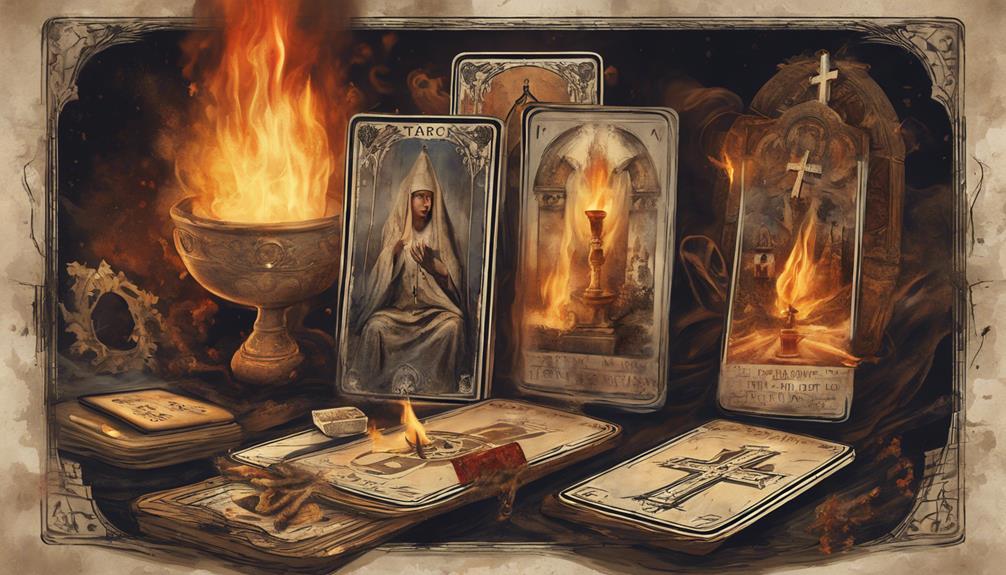
In various religious communities, opposition to tarot often stems from deep-seated beliefs and concerns regarding divination practices. Throughout history, religious opposition to tarot has been a recurring theme, with various religious authorities viewing tarot cards as tools that explore established religious doctrines. In the historical context, the Catholic Church, for example, has at times condemned tarot as a form of witchcraft or heresy, fearing its influence on the faithful.
Similarly, some Protestant denominations have expressed reservations about tarot, seeing it as a practice that examines into the occult and undermines the belief in divine providence. Islamic scholars have also raised objections to tarot, viewing it as a form of fortune-telling that goes against the teachings of the Quran.
Despite these religious oppositions, many individuals today view tarot as a tool for introspection and personal growth, separate from its historical associations with the supernatural. The clash between religious beliefs and the practice of tarot continues to spark debates on the boundaries between spirituality, divination, and personal freedom.
Tarot in Popular Culture
Tarot cards have become increasingly prevalent in popular culture, appearing in various forms of media and entertainment. The allure of Tarot symbolism and the mystical aura surrounding Tarot readings have captured the imagination of many, leading to their widespread incorporation into modern-day pop culture.
- TV Shows: From featuring Tarot readings as a plot device to creating characters who are skilled Tarot readers, television shows have embraced Tarot symbolism to add layers of mystery and intrigue to their stories.
- Music: Several musicians and bands have drawn inspiration from Tarot cards, incorporating their imagery and themes into album artwork, lyrics, and even music videos.
- Social Media: Platforms like Instagram and TikTok have become popular spaces for Tarot enthusiasts to share daily card pulls, interpretations, and insights, making Tarot readings more accessible and interactive for a wider audience.
The integration of Tarot into popular culture reflects society's enduring fascination with the mystical and the unknown, bridging ancient wisdom with modern-day sensibilities.
Frequently Asked Questions
Can Tarot Cards Predict the Future Accurately?
Tarot cards, a tool often debated for accuracy of predictions, evoke both skepticism and belief. People find intrigue in their potential to foresee the future. The mystery surrounding tarot adds allure to its enigmatic nature.
Are Tarot Readings Always Based on Supernatural or Occult Beliefs?
Tarot readings, often linked to supernatural beliefs, can also be approached from a psychological interpretation. Their historical significance spans cultures. Embracing diverse perspectives on tarot can offer insights beyond the supernatural, fostering understanding and growth.
How Do Tarot Cards Differ From Other Forms of Divination?
Tarot cards stand out from other divination methods through their focus on symbolic interpretation and fostering a deep spiritual connection. This unique approach allows for profound insights and guidance that resonate with individuals seeking clarity and self-discovery.
Are There Specific Rules or Guidelines to Follow When Using Tarot Cards?
When using tarot cards, individuals should follow ethical practices and employ interpretation techniques that resonate with them. Trusting intuition and respecting the cards' symbolism are key to connecting deeply with the messages they convey.
Is There a Scientific Explanation for How Tarot Readings Work?
Tarot readings' credibility lies in their psychological impact, not scientific validation. The neural processes and cognitive biases involved spark a connection with one's subconscious, offering introspection and guidance beyond traditional reasoning.

